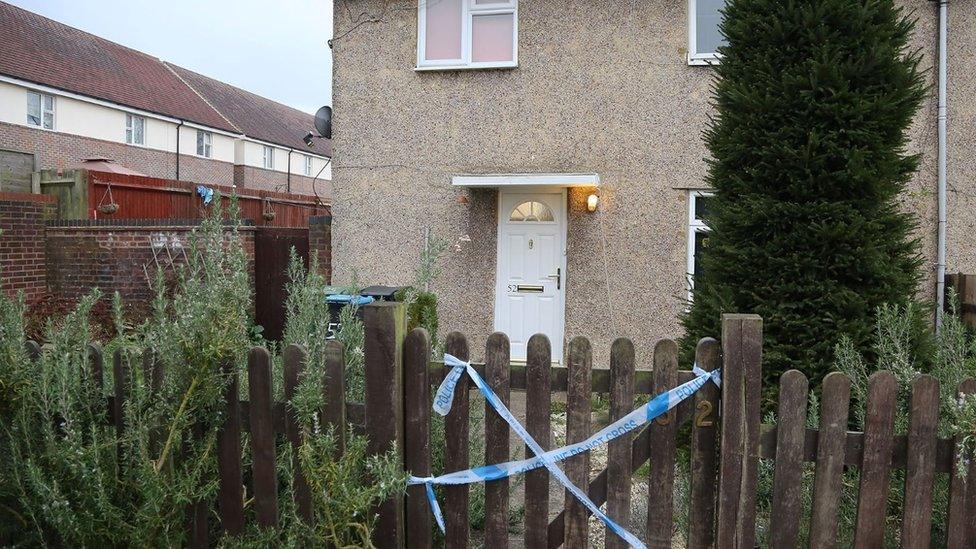Alberto Giraldo-Tascon: Murder accused 'burnt wife's body and buried it'
- Published

Luz Margory Isaza Villegas's body was found on a common
A man murdered his wife, burnt her body in woods and buried it in a shallow grave, a court heard.
Alberto Giraldo-Tascon, 55, and Luz Margory Isaza Villegas's baby daughter was in the car he drove to the woods with his wife's body in a suitcase, the jury was told.
Remains of the victim, 50, were found in Northchurch, near Berkhamsted on 17 January, St Albans Crown Court heard.
Mr Giraldo-Tascon, of Ritcroft Street in Hemel Hempstead, denies murder.
The defendant earlier pleaded guilty to preventing a lawful burial.
The court heard that in January, Mr Giraldo-Tascon, a former policeman in Colombia, and his wife, were going through a trial separation, but were still both living at their home in Ritcroft Street.

Police sealed off the house in Ritcroft Street, Hemel Hempstead and carried out searches of the home and garden
Prosecutor Stuart Trimmer QC said the defendant had "become obsessive" over his wife and would check her bags and mobile phone.
He told the jury the last contact he had had with his wife was at about 09:30 GMT on 13 January, when she sent a WhatsApp message to her daughter.
Mr Trimmer said she was killed that morning at their home, before Mr Giraldo-Tascon put his wife's body in the suitcase and put it in the boot of the car.
Shortly after 14:00 GMT he was seen carrying the baby girl he and his wife had fostered, getting in his car and driving off, Mr Trimmer said.
That afternoon, some young people on Northchurch Common saw "a small man with a shovel" and a small fire behind bushes. Later they saw him filling in a hole.
'Mum has gone'
The jury was told he put the suitcase in a shallow grave and set fire to it before covering it up with soil.
The couple's three adult children called police later that day when they could not contact their mother.
The jury heard Mr Giraldo-Tascon allegedly said to his son Julian, "Your mum has gone, maybe she will never come back again".
He was arrested the following day and charged with murder before her body was found.
Four days later, officers found the charred remains of his wife.
She had blunt force traumas to her neck and face and bruising suggested there could have been "strangulation".
The court heard the defendant told police they had had an argument on the day she disappeared, prompting her to leave the house. He told officers he went to look for her at about 15:00 GMT.
The trial continues.